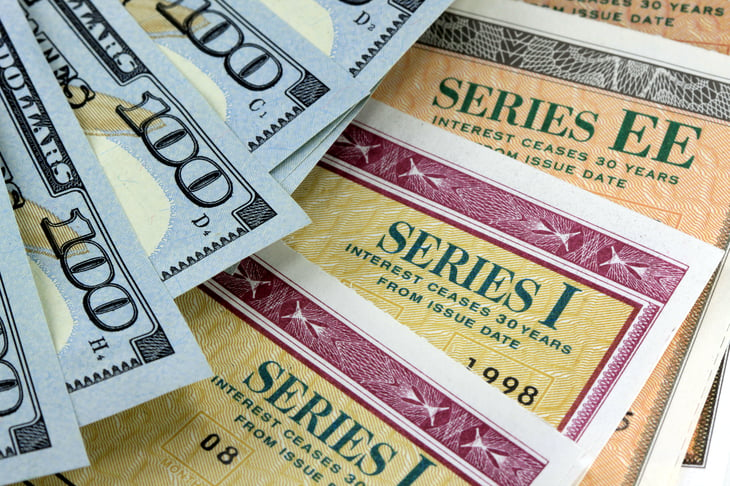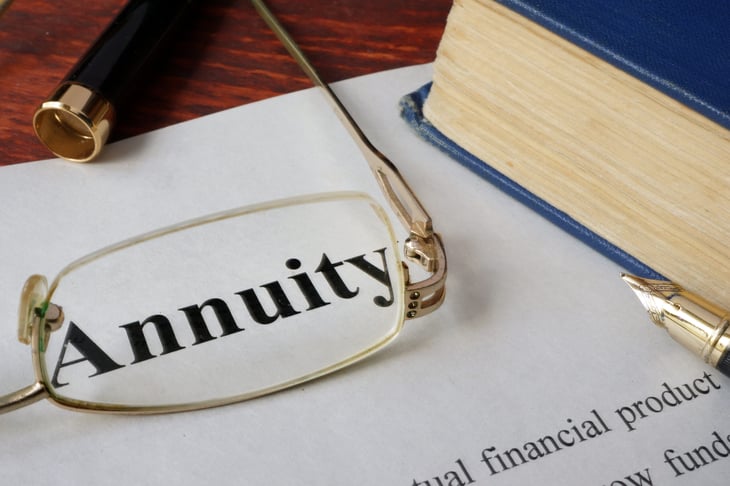
Editor's Note: This story originally appeared on NewRetirement.
The best retirement investments depend entirely on you and your goals. Don’t dive into anything or let anyone tell you how to invest unless they understand how much money you have and what your goals are for that money, including when and how you want and need to spend it.
Start by Defining Your Goals and Target Asset Allocation

You have so many options that could be defined as the best investments for retirement. However, you can only determine which options are best for you if you take two steps first.
Set Investment Goals

Contrary to popular belief, there is no one best retirement investment. Just as not all retirees are golf-playing grey-haired 64-year-olds, not everyone has the same goals and needs for their retirement money.
For example:
- You may have enough money to be able to tolerate risk with at least some of your capital.
- Perhaps you are conservative and only want to outpace inflation.
- Sometimes turning assets into reliable income is what is most important.
Determine Your Ideal Target Asset Allocation

It is highly likely that there is probably not one single investment type for all of your money. You want to define the right asset allocation — a mix of different types of investments — for your goals.
Here are a few articles specifically about how to determine your goals and an investing strategy to meet your specified goals:
- 6 key factors to consider when choosing a retirement investment
- Why you should consider a retirement bucket strategy
- Retirement income planning: strategies for lifetime wealth and peace of mind
- Why an investment policy statement is the secret weapon your retirement plan needs
- Best asset allocation strategy for your retirement
The traditional investment opportunities are listed below. However, the best retirement investment is spending a bit of time to create and maintain a comprehensive retirement plan. A complete plan will help define your investment needs. After all, there is a lot more to a secure retirement than the right asset allocation strategy!
The 17 Best Retirement Investments

Following are 17 of the most popular and best retirement investments.
The savviest retirees will mix and match these opportunities into a strategy to best meet their retirement goals.
1. Stocks

Stocks? Many people think that stocks are not a good investment choice for retirement because they expose the investor to too much risk.
However, risk often equals returns. And, if you intend to use all or some of your assets as income, then you need to take some degree of risk with your assets to at least keep pace with — if not outpace — inflation.
In an inflationary period, the value of cash goes down. A dollar buys less and less with every passing year. So, you need your money to return at least as much as inflation rises.
And, if it makes you feel any better, even if stocks are prone to some dramatic ups and downs, stock markets generally trend upward over the long term.
NOTE: Buying individual stocks is not always the best way to have exposure to the stock market. Funds (a group of stocks) give you diversity in your stock exposure. However, if you have particular expertise in a specific industry and anticipate growth in that area, then an individual stock can be good — though risky.
Learn more about asset allocation and whether or not you should worry about the ups and downs of the stock market.
2. Dividend-Producing Stocks

Dividends are cash payments or shares of stock or other property that are paid to shareholders at the discretion of the board of directors. They are usually based on profits.
Dividend-producing stocks can be a best retirement investment since the goal of many retirement investors is retirement income. Dividends are one way to turn assets into income.
3. Mutual Funds

A mutual fund was once the gold standard of retirement investing. It is an investment into a professionally managed portfolio of stocks.
Mutual funds take away some of the risk of investing in stocks while still providing you the potential for growth. (You get the benefits of stocks while minimizing the risks.) There are all kinds of mutual funds providing different benefits and different diversification strategies.
However, mutual funds are not as popular as they once were. They can sometimes have high fees and research indicates that they may not be the most efficient way to grow your money.
4. Dividend-Producing Funds

A dividend-producing fund is a mutual fund invested in stocks that pay dividends.
If you are interested in earning dividends, but don’t want the risk of an investment in an individual stock, then a dividend-producing fund might be right for you.
5. Glide Path or Target-Date Funds

Many people think that glide path or target-date funds are one of the best retirement investments.
These types of funds are like mutual funds but your money is strategically reallocated over time to achieve both growth and security for your assets. So, the fund is more aggressively invested when you are young, and it automatically reallocates into safer investments as you age.
So, when you invest in a target-date fund, you don’t need to worry about what percentage of your money should be in stocks, bonds or Treasury inflation-protected securities (TIPS) and how that allocation needs to change over time. This worrying is managed by the fund manager. And, because it is actively managed, the fees associated with a target date fund may be higher than you would like to pay.
Learn more about target-date funds.
6. Index Funds

An index fund is a kind of fund designed to mimic the rise and fall of an overall market index. The most popular index funds track the Standard & Poor’s 500.
The reality is that these index funds often offer better returns than a professionally managed mutual fund. And, they come with much lower fees.
Index funds are a good low-cost way to have exposure to the overall stock market without worrying about the ups and downs of a single industry or company.
Explore the pros and cons of index funds.
7. Exchange-Traded Funds

Exchange-traded funds (ETFs) are what many people think of as the best retirement investment that involves stocks. ETFs are very similar to index funds in that they enable you to invest in a preset group of investments — often an index.
The difference between an ETF and an index fund is the way they are traded. You can purchase an ETF in the same way you purchase stock, and the costs of ETFs can be quite low.
8. Bonds

Many people think bonds are one of the best investments for retirement because you know what you are going to get and when.
When you buy a bond you are actually lending money to a company or other institution, and they are agreeing to pay you the face value of the bond at a predetermined date (maturity date). They will also pay you a predetermined interest rate (coupon rate) over a specified period of time (coupon dates).
There are corporate bonds (where you lend money to a company), municipal bonds (your money goes to states, cities and counties) and U.S. Treasurys (issued by the U.S. Department of Treasury).
Learn more:
9. Bond Mutual Funds, Bond Index Funds and Bond ETFs

Most people think of funds (mutual, index and ETF) as being about stocks. However, these types of investments are also available for bonds.
Bond mutual funds: When you own a bond mutual fund, a professional invests your money (pooled with other investors) where that pro thinks the best opportunities are. You can invest in a bond mutual fund that mimics the broad bond market. Or, you can invest in narrower sectors: government bonds, corporate bonds or even more-focused funds.
Bond index funds: These are funds that are designed to match the performance of a specific bond index.
Bond ETFs: Bond ETFs are very diversified and typically have low fees.
10. Treasury Inflation-Protected Securities

Treasury inflation-protected securities (TIPS) are a type of bond that helps investors keep pace with inflation. TIPS are Treasury bonds that are indexed to inflation. As inflation rises, the face value of the bond also rises.
These bonds also carry the full faith and credit of the U.S. government, making them a very low-risk investment.
11. Certificates of Deposit

Certificates of deposit (CDs) are considered to be one of the safest investments paying higher interest than a savings account.
When you put your money in a CD, you are getting a higher interest rate in return for agreeing to keep your money in the bank for the time period specified by the CD.
12. Bond and CD Ladders

Both bonds and CDs are guaranteed investments that are paid back at a specific time.
A laddered investment is a way of setting up multiple bonds or CDs so that they mature over different time periods. So, ladders are often used to set up retirement income.
If you want a safe investment that produces income, a ladder might be right for you.
Learn more about bond ladders.
13. Real Estate

Real estate is an asset class with high returns. It also usually offers a hedge against inflation. Since real estate has historically been inversely correlated with conventional assets, it can be a good way to diversify your investments away from the stock market.
Investing in real estate can mean everything from owning your home to buying shares in a real estate investment trust (REIT).
Take a look at eight ways to invest in real estate for retirement.
14. Lifetime Annuities

Okay. An annuity is technically an insurance product and not an investment. However, as a way to use your retirement assets, annuities belong on this list of best retirement investments.
When you buy an annuity, you are exchanging a lump sum of money for a guaranteed monthly paycheck for a specified period of time.
There are many different kinds of annuities. Depending on your goals, the best annuity for retirement is probably either an immediate or a deferred lifetime annuity.
- A lifetime annuity is one that pays you income for as long as you live — no matter how long that turns out to be.
- An immediate annuity is one that starts payments to you as soon as you purchase the product.
- A deferred annuity is one that starts payments to you at a specified time in the future.
If you want to guarantee your retirement income, annuities can be a rock-solid way to do so.
15. Impact Investments

Many of us want to give back as much as possible in retirement. Impact investing is one way to invest retirement money while supporting causes important to you.
Impact investing, related to socially responsible or ethical investing, conscious capitalism and sustainable investing, is defined by the Global Impact Investing Network (GIIN) as investments “made into companies, organizations and funds with the intention to generate a measurable, beneficial social or environmental impact alongside financial return.”
Want to do well by doing good? Explore the benefits of an impact investment.
16. Financial Advice

Getting the right asset allocation can be tricky. And, selecting the right investments can feel overwhelming. Don’t despair. It is entirely possible to keep it simple and do it yourself. (Hint: index funds.)
However, many people find that it is incredibly useful and reassuring to invest in high-quality financial advice, ideally from a fee-only fiduciary adviser. (You can also pay someone to manage your assets, but this can get expensive quickly.)
A fee only adviser can help determine the right mix of assets.
17. The Number One Best Retirement Investment? Invest in Making the Most of This Time of Your Life!

Guess what? The best investments for retirement don’t involve money.
Instead, they are investments that use our time to the fullest, allow us to spend precious moments with the people we love and enable us to focus on those things that make us happy.
Here is a list of the 10 best retirement investments that don’t involve any kind of financial product.






Add a Comment
Our Policy: We welcome relevant and respectful comments in order to foster healthy and informative discussions. All other comments may be removed. Comments with links are automatically held for moderation.